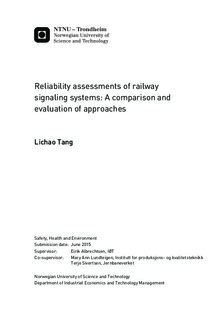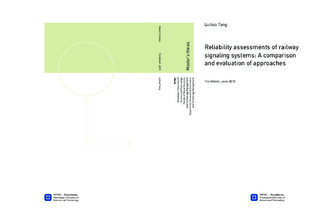| dc.description.abstract | The railway signaling system is the key system to ensure the safe operation of railway traffic. It is therefore important to have a safe and reliable railway signaling system. The railway authority defines requirements that should be complied with. The technical safety report is a vital documentation for the demonstration of fulfillment of requirements to the railway authority.
A literature review of the signaling system is presented first. It describes the different technologies used for railway signaling system. Moreover, challenging problems in the design of two track station, based on the situations in Norway, were discussed. In addition, some relevant regulations and standards were introduced.
Further, safety-critical functions performed by a signaling system were presented. The methods for determination of tolerable hazard rate, which is the safety requirements for safety-critical functions, were introduced. These methods distinguished two different demand modes, i.e., low-demand mode and high-demand mode.
It described different roles and responsibilities involved for the whole signaling system life cycle. As a safety case is a product from one phase of system life cycle, a brief introduction to safety case was presented. The discussion of differences among three categories of safety cases was followed. The structure of technical safety report and the different categories of technical safety reports were described.
Two technical safety reports from Norwegian National Rail Administration were evaluated in the light of the requirements from EN 50129. In particular, the reliability measures of safety- critical functions that were presented in the reports were discussed in this thesis. Some examples of inadequacy from these technical safety reports were discussed. An approach for improv- ing the inadequacy was proposed.
Finally, it performed a fault tree analysis as a comparison with the method used in the technical safety report. | |

